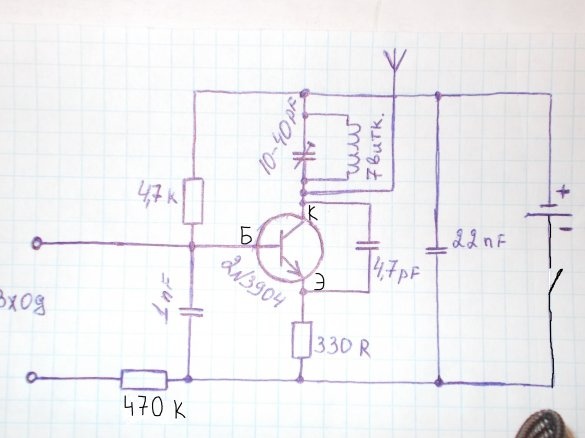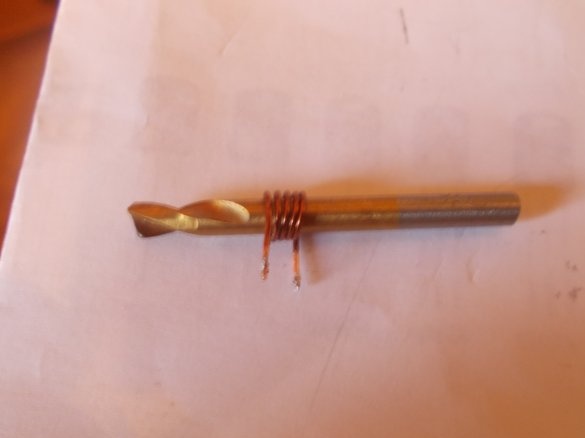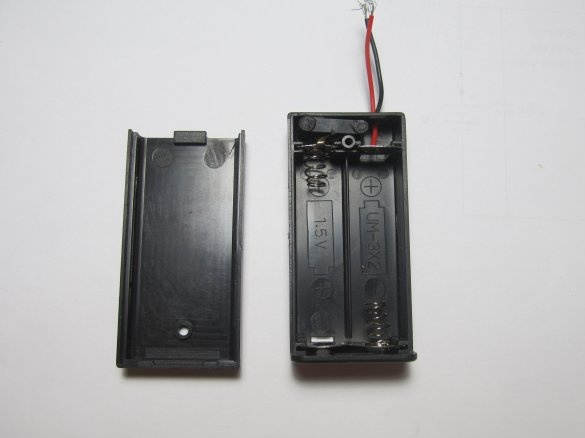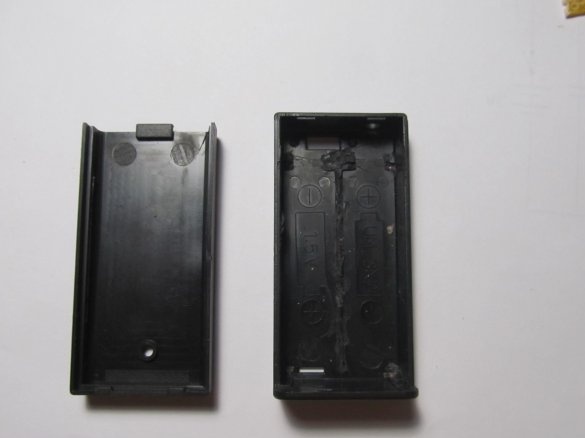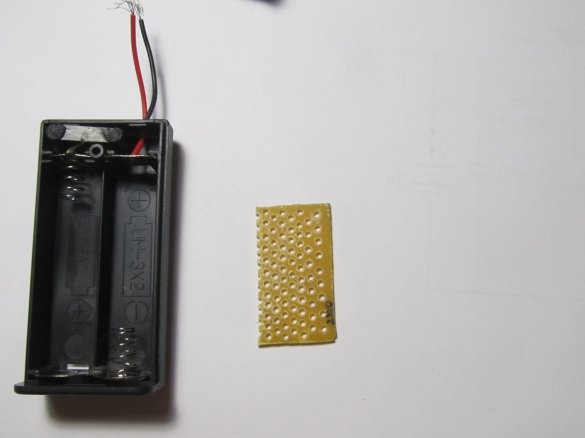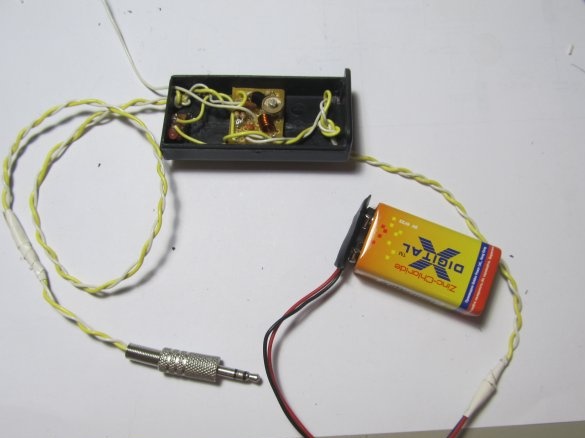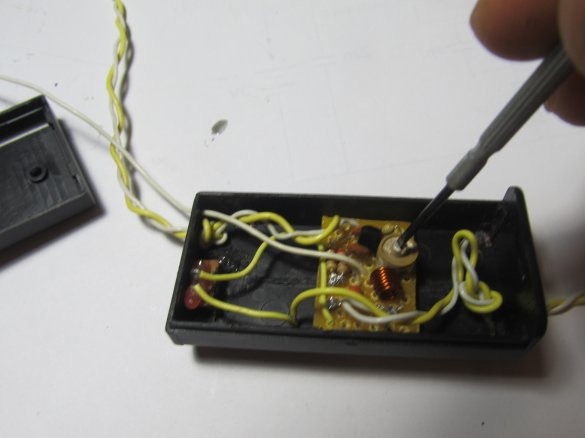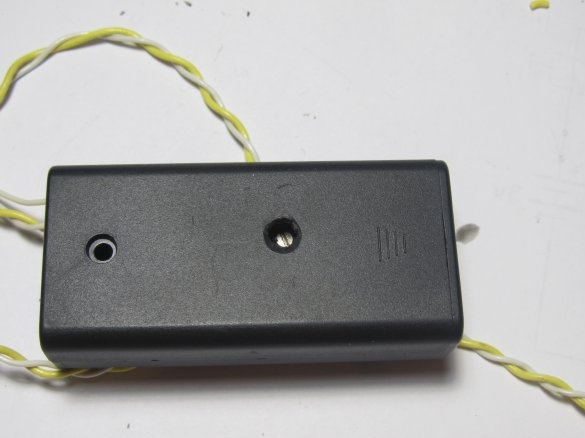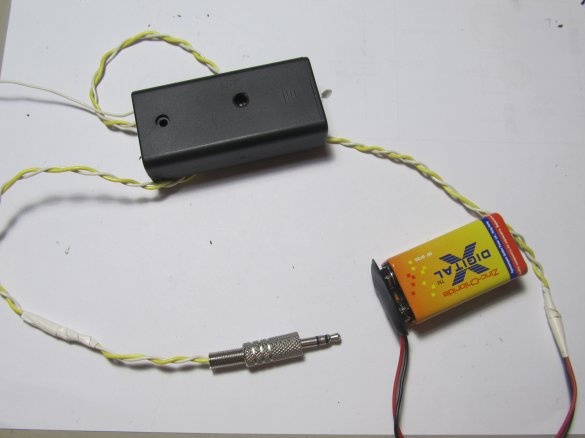It will be about how to make the simplest and cheapest radio transmitter that anyone who does not even understand anything can assemble electronics.
The reception of such a radio transmitter takes place on a regular radio receiver (on a landline or in a mobile phone), at a frequency of 90-100 MHz. In our case, it will work as a radio extension for headphones from the TV. The radio transmitter through the audio plug connects to the TV through the headphone jack.
It can be used for various purposes, for example:
1) wireless headphone extension cord
2) Radio nanny
3) A bug for eavesdropping and so on.
To make it, we need:
1) Soldering iron
2) Wires
3) 3.5mm audio plug
4) Batteries
5) Copper lacquered wire
6) Glue (Moment or epoxy) but it may not be needed
7) Old boards from the radio or TV (if any)
8) A piece of plain textolite or thick cardboard
Here is his diagram, it is powered by 3-9 volts
The list of radio parts for the circuit in the photo, they are very common and find them is not difficult. The AMS1117 part is not needed (just ignore it)
The coil should be wound in such parameters (7-8 turns with a wire with a diameter of 0.6-1 mm, on a mandrel of 5 mm, I wound on a drill of 5 mm)
The ends of the coil must be cleaned from varnish.
As a housing for the transmitter, a battery housing was taken
Everything was cleaned inside. For ease of installation
Next, we take textolite, cut it and drill many holes (it is better to drill more holes, it will be easier to assemble)
Now solder all the components according to the scheme
Take the audio plug
And solder wires to it, which are shown on the diagram as (input)
Next, we place the board in the case (it will be most reliable to glue it) and connect the battery
Now we connect our transmitter to the TV. On the FM receiver we find the free frequency (the one on which there is no radio station) and tune our transmitter to this wave. This is done by a tuned capacitor. Slowly twist it until we hear the sound from the TV on the FM receiver.
All our transmitter is ready to go.To make it convenient to tune the transmitter, I made a hole in the housing
Also, instead of an audio plug, you can put a microphone and then our transmitter will turn into a bug or a radio nanny. We place the transmitter in the room with the child, and in the kitchen we set up the radio and listen to what the child does there.



